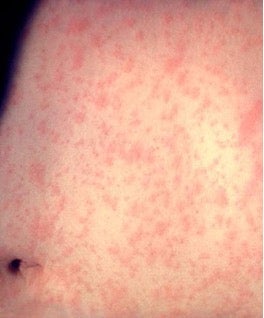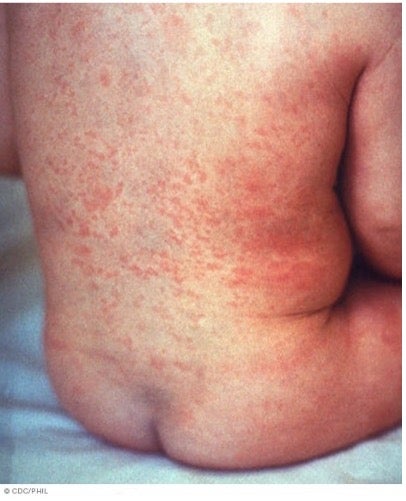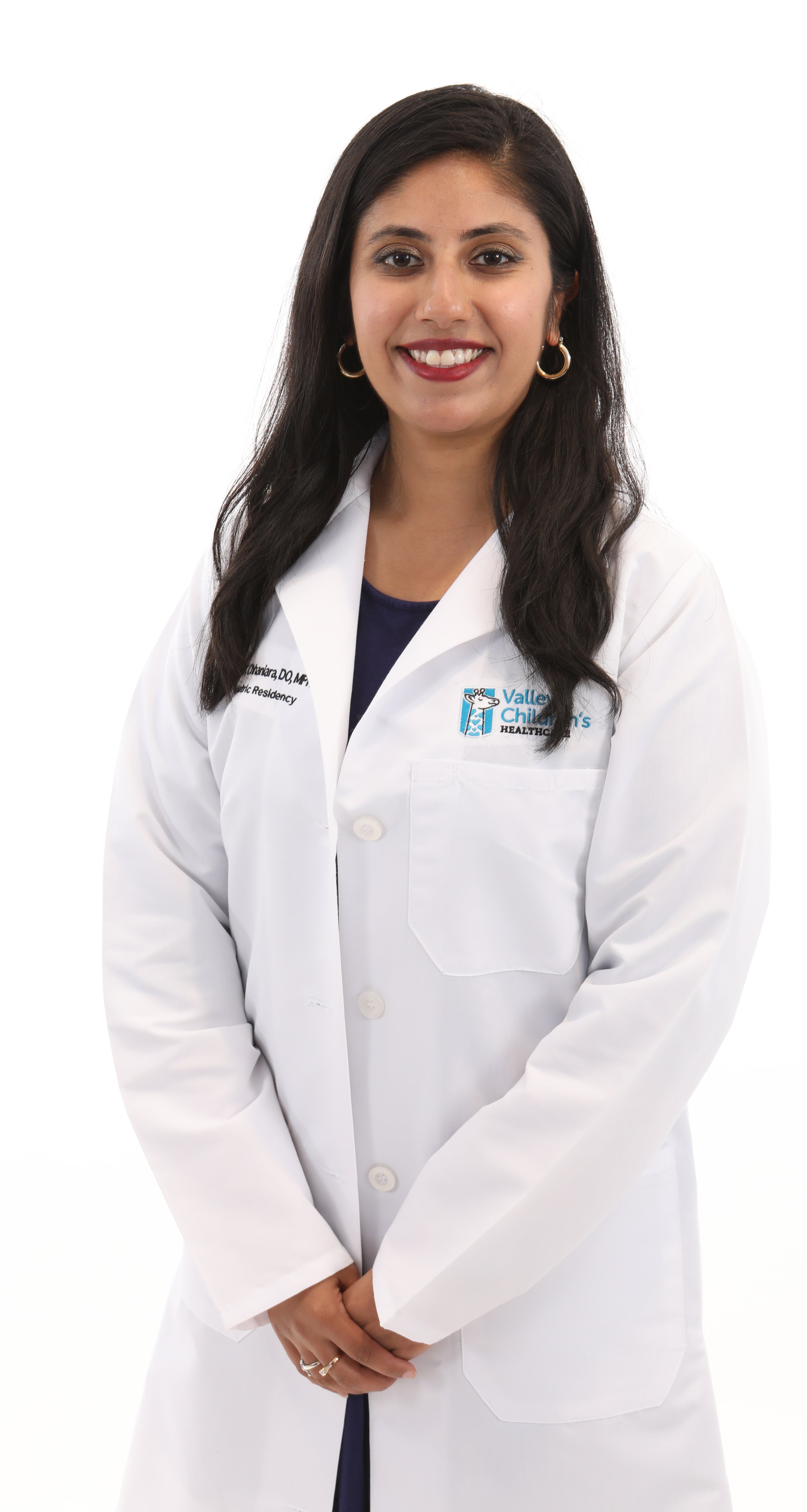Can You Spot the Difference? Conditions That Mimic Measles and How to Tell Them Apart
July 1, 2025When a patient presents with a high fever and a red, blotchy rash, measles often jumps to the top of the list of everyone’s mind. However, measles is not the only illness that can present this way. Several other infections often called “viral exanthems” can mimic measles in clinical appearance, leading to uncertainty. Here’s a breakdown of key mimickers of measles and how they compare.
First, let's go over what measles is and what defines it.
Disease: Measles
Cause: Rubeola

Key Diagnostic Features:
• Fever (often high, >38.5°C) begins before the rash.
• 3 C’s: Cough, Coryza (runny nose), and Conjunctivitis.
• Koplik Spots: tiny white lesions on the buccal mucosa.
• Rash begins on the face and spreads downward
Now, let's look at the top mimickers of measles and what defines them.
Disease: German Measles
Cause: Rubella

Similarities:
• Both are caused by viruses and transmitted via respiratory droplets
• Prodromal symptoms: fever, malaise, and rash
• Rash starts on the face and spreads downward
Differences:
• Rubella rash tends to be lighter and resolves more quickly (typically in 3 days).
• Rubella has milder prodromal symptoms, and conjunctivitis (eye involvement) is less prominent.
• Enlarged lymph nodes behind the ear are characteristic of rubella, not measles.
• Rubella is particularly concerning in pregnant women due to the risk of congenital rubella syndrome.
Disease: Roseola Infantum
Cause: HHV-6/HHV-7

Similarities:
• Common in children and presents with fever followed by a rash.
• Rash can be maculopapular and widespread.
Differences:
• Roseola affects infants (6 months to 2 years) almost exclusively.
• High fever precedes the rash and often abruptly resolves before the rash appears.
• The rash typically starts on the trunk and spreads to the limbs, not the face.
• No Koplik spots or significant respiratory symptoms.
Disease: Chickenpox
Cause: Varicella-Zoster Virus

Similarities:
• Fever and widespread rash
• Rash may start on the face/trunk and spread
Differences:
• Rash is vesicular—“dew drop on a rose petal” appearance
• Lesions appear in crops at different stages (macules → papules → vesicles → crusts)
• More itchy than measles
• No Koplik spots, cough, or conjunctivitis
Disease: Fifth Disease
Cause: Parvovirus B19

Similarities:
• Mild fever and rash
• Spread by respiratory droplets
Differences:
• “Slapped cheek” rash on face followed by lacy rash on trunk/limbs
• Often asymptomatic in adults
• Joint pain is common in adults
• No cough, conjunctivitis, or Koplik spots
Disease: Scarlet Fever
Cause: Group A streptococcus (bacteria)

Similarities:
• Fever, sore throat, and rash.
• Rash can appear on the face and body
Differences:
• Associated with a “strawberry-like tongue” and red lines in skin folds
• Rash feels rough like sandpaper.
• Responds to antibiotics, unlike viral infections
Disease: Kawasaki Disease
Cause: Inflammatory Process

Similarities:
• Fever and widespread rash.
• Red eyes and mucosal changes can occur.
Differences:
• Primarily affects children under 5.
• Persistent fever (≥5 days), conjunctival injection, red cracked lips, and swollen hands/feet.
• Risk of coronary artery aneurysms—requires prompt diagnosis and treatment with IVIG.
Disease: Drug Reactions (Morbilliform Drug Eruptions)
Cause: Medications

Similarities:
• Maculopapular rash resembling measles.
• Rash may appear after medication exposure.
Differences:
• Typically, no fever, vomiting, diarrhea or systemic symptoms unless part of a hypersensitivity syndrome.
• Often starts on the trunk and spreads outward.
• No cough, conjunctivitis, or Koplik spots.
Disease: Hand-Foot-Mouth Disease
Cause: Echovirus, Coxsackievirus

Similarities:
• Fever and generalized rash.
• Can include hand-foot-mouth disease with similar rash elements.
Differences:
• Rash pattern is variable and may include vesicles or ulcers.
• GI symptoms more prominent in enteroviruses.
• May affect palms and soles, which is rare in measles.
What to take away
While measles is highly contagious and should always be ruled out in patients with fever, rash and respiratory symptoms, it’s important to consider other causes—especially in vaccinated individuals. A detailed history (including travel, vaccination, and drug exposures), physical exam and targeted diagnostics (PCR, serology) are key to distinguishing between look-alikes. Please consult your child’s pediatrician if you have any questions or concerns regarding measles-like rashes.
Sources:
Kawasaki Disease: Signs, Symptoms and Diagnosis | American Heart Association
Morbilliform drug reaction (maculopapular drug eruption)
Measles (Rubeola) | Measles (Rubeola) | CDC

